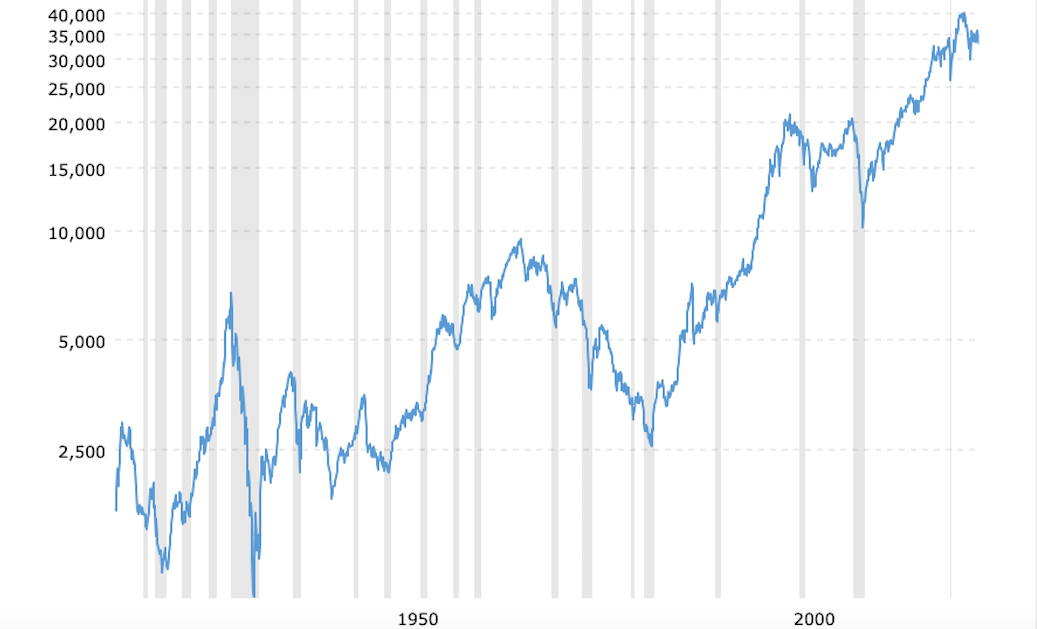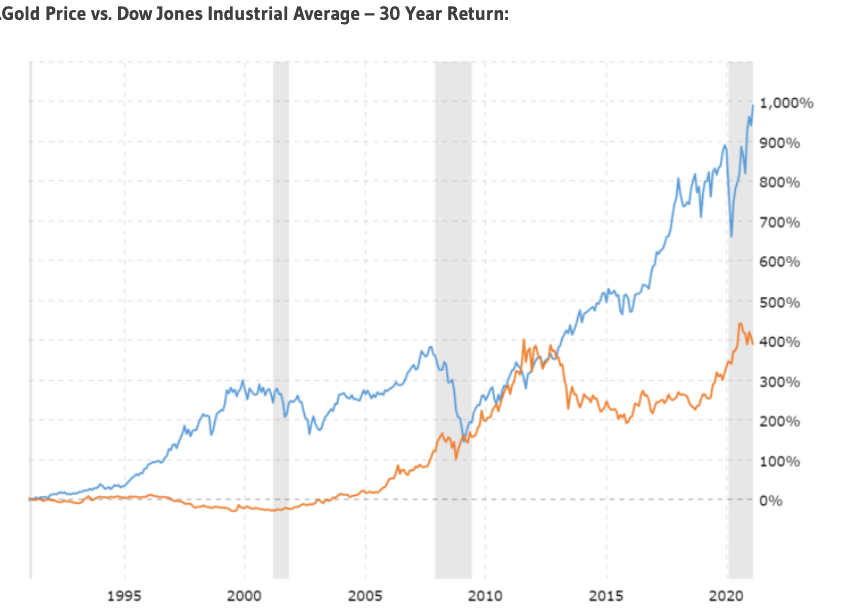What’s the Better Investment: Gold or Stocks?
Investing has always been a game of choices, and the age-old debate between gold or stocks is no exception. As investors, we are all faced with the dilemma of choosing between these two investment options, each with its unique set of advantages and risks. In this blog post, we’ll dive into the characteristics, historical performance, and strategies for investing in gold or stocks, helping you make an informed decision that aligns with your financial goals.
Key Takeaways
- This article explores the unique characteristics and potential benefits of gold and stock investments.
- Gold is a valuable asset for portfolio diversification, while stocks offer higher returns with access to dividends.
- It is essential to consult a financial advisor in order to make informed decisions about investing in gold or stocks.
Understanding Gold and Stock Investments

Gold investments present a tangible asset with an extended record of worth, often perceived as a secure harbor during economic instability. Over certain long-term periods, stocks have outperformed gold and bonds; however, over some 15-year periods, physical gold has outperformed stocks and bonds as one of the precious metals.
We will delve into the unique characteristics and potential benefits of these two investment options to better comprehend them.
Gold Investments
Gold investments, often referred to as the yellow metal, provide a tangible asset with an established reputation for value, often regarded as a secure option during times of economic insecurity. Gold is considered a risky investment as its value does not always increase, particularly when markets are thriving. The gold industry can be affected by various factors, such as production, demand, and geopolitical events. The return on gold solely depends on price appreciation, which can be influenced by various factors, including the performance of commodities markets.
Considering the specific costs associated with investing in gold is fundamental. Storage and insurance expenses are costs that come with owning gold. A value-oriented approach and an income-seeking strategy are available for investing in gold, which can help investors identify the best gold stocks to add to their portfolios. Investors typically turn to gold or gold-related investments, such as an exchange traded fund (ETF) that tracks gold prices, when there’s trepidation in the market and they anticipate stock prices to decrease. Some investors also incorporate a precious metals IRA as part of their retirement portfolio.
Stock Investments
Stock investments signify ownership in a corporation, offering potential for growth and revenue through dividends. The Dow Jones Industrial Average (DJIA) experienced a 991% increase from 1990 to 2020, reflecting the potential for stocks to generate significant cash flow for investors over the long term.
Factors Influencing Gold and Stock Prices

Potential returns for investors from gold and stock prices are shaped by a variety of factors. For gold, factors such as these influence it’s price:
- the value of the U.S. dollar
- demand for gold
- gold production
- interest rates
- geopolitical factors
- supply and demand dynamics
- inflation
- cultural and seasonal trends
On the other hand, stock prices are determined by a range of considerations, such as:
- Economic conditions
- Organization performance
- Investor sentiment
- Market trends
We’ll examine more closely how economic uncertainty and market data can potentially affect gold and stock prices.
Economic Uncertainty and Gold Prices
Gold prices often rise during times of economic uncertainty, as investors seek a safe haven for their assets, such as gold bullion. The Federal Reserve has taken the drastic step of printing large amounts of money. This combined with inflation levels not seen since the 1980s is prompting investors to pour their money into gold.
In 2021 and 2022, and especially in 2023 with recent events, gold demonstrated superior performance relative to stocks as geopolitical uncertainty and inflation rose on a global scale. This highlights gold’s ability to act as a protective investment in times of economic turbulence.
Market Data and Stock Prices
Stock prices are influenced by various market data, including:
- Company performance
- Industry trends
- Overall economic conditions
- Macroeconomic indicators, such as GDP, inflation, and unemployment
- Technical factors, such as chart patterns, support and resistance levels, and moving averages
Company activity, including earnings reports, dividend payments, and stock buybacks, can also have a noteworthy effect on stock prices. Additionally, economic conditions, interest rates, and global market news can significantly influence stock prices.
Assessing Risks and Returns

Assessing the historical performance and the benefits of diversification is crucial when comparing the risks and returns of gold and stock investments. Gold investments may be subject to risks such as price volatility, liquidity risk, and storage costs. On the other hand, investing in stocks carries various risks, such as market risk, liquidity risk, and dividend risk.
A close examination of their historical performance and the advantages of diversification will enhance our understanding of their risks and returns.
Historical Performance
Gold and stocks have shown varying returns over different time periods, with stocks generally outperforming gold in the long term. From 1990 to 2020, the price of gold increased by approximately 360%, while the DJIA experienced a 991% increase during the same period. It’s important to note, however, that over some 15-year periods, gold outperformed stocks and bonds, acting as a reliable safeguard against inflation and demonstrating its value preservation over time.
Diversification Benefits
Diversifying a portfolio with both gold and stocks can help manage risk and potentially enhance returns. Gold investments can help mitigate risk by providing a buffer against inflation and market volatility, while stock investments can help augment returns by providing a source of potential capital gains and dividend income.
By incorporating both gold and stock investments in a portfolio, investors can achieve a more balanced investment strategy that takes advantage of the unique characteristics of each asset class.
Strategies for Investing in Gold and Stocks

A strategic approach, tailored to an investor’s financial goals and risk tolerance, is required for investing in gold and stocks. Two primary strategies that can be employed are the value-oriented approach and the income-seeking strategy.
We will delve into the details of each of these strategies.
Value-Oriented Approach
A value-oriented approach focuses on finding undervalued assets, such as gold stocks during market downturns or companies with strong fundamentals. Investors can identify undervalued assets by conducting research on the fundamentals of a company, including its financials, management, and competitive position.
Examples of undervalued assets include DRDGold’s stock, which has a year-to-date return of 33.2%, and Sibanye Stillwater, which has faced challenges that a value-oriented investor may consider an opportunity. Recognizing the risks associated with a value-oriented approach, such as the possibility of assets not realizing their intrinsic value or exposure to market volatility, is of utmost importance.
Income-Seeking Strategy
An income-seeking strategy prioritizes investments that generate regular income, such as:
- Dividend-paying stocks
- Bonds
- Real estate
- Gold investments with a yield
This strategy focuses on generating a steady and reliable stream of income from investments rather than solely relying on capital appreciation.
Nonetheless, the risks associated with an income-seeking strategy, such as the income generated being insufficient to meet the investor’s expenses or lagging behind inflation, should be taken into account.
When to Choose Gold Over Stocks (and Vice Versa)
Deciding whether to invest in gold or stocks depends on an investor’s objectives and the prevailing market conditions. When seeking a safeguard against economic instability or market fluctuation, gold should be chosen, unlike stocks.
Conversely, stocks should be preferred over gold when the investor is in search of growth and revenue. To further illustrate when to choose gold over stocks or vice versa, let’s examine gold as a hedge and stocks for growth and income.
Gold as a Hedge
Gold can serve as a hedge against inflation and economic uncertainty, making it a valuable addition to a diversified portfolio. During times of economic instability, gold prices often rise as investors seek a safe haven for their assets.
Some examples and advantages of gold serving as a hedge include its ability to protect against a declining stock market and to preserve purchasing power during inflationary times.
Stocks for Growth and Income
Stocks offer opportunities for growth and income, making them a suitable choice for investors seeking long-term capital appreciation and dividend income. Potential advantages of investing in stocks for growth and income include the possibility of higher returns, benefiting from stock market growth, and access to dividends.
By diversifying a portfolio with both gold and stocks, investors can balance the unique characteristics and benefits of each investment option, maximizing their potential returns and managing risk.
Consult a Financial Advisor

For personalized investment advice and ongoing portfolio management, consulting a financial advisor is fundamental. This ensures that investors make informed decisions and have full comprehension of the risks and rewards associated with their investments.
An experienced advisor can provide you with individualized investment strategies tailored to your personal financial goals, risk tolerance, and investment horizon. They also help investors employ a value-oriented approach or an income-seeking strategy when investing in gold and stocks.
Ongoing Portfolio Management
Ongoing portfolio management helps ensure that an investor’s asset allocation remains aligned with their objectives and risk tolerance over time. This helps guarantee that the investor’s portfolio is well-diversified across various asset classes and that their investments are performing as anticipated.
Strategies for ongoing portfolio management include rebalancing, tax-loss harvesting, and dollar-cost averaging, which can help investors maintain the desired risk/return profile and maximize their potential returns.
Summary
In conclusion, both gold and stocks offer unique investment opportunities with their own set of advantages and risks. By understanding the factors that influence their prices, assessing their historical performance and diversification benefits, and employing suitable investment strategies, investors can make informed decisions that align with their financial goals. Ultimately, we recommend you consult a financial advisor for personalized investment advice and ongoing portfolio management to ensure a well-diversified and successful investment journey.
Frequently Asked Questions
Why buy gold instead of stocks?
Gold is a lower-risk investment that maintains its value in the long term, offers protection against inflation, and is historically a reliable hedge against economic uncertainties.
Is it a good idea to invest in gold 2023?
Investing in gold in 2023 could be a good choice given its value has increased and can act as a safe haven during turbulent economic times. With high inflation, potential recession, and rising interest rates this year, gold could prove to be a profitable asset for investors.
What is the primary difference between gold and stock investments?
The primary difference between gold and stock investments is the degree of risk, with gold being less risky as its prices are less volatile and it provides a safeguard against inflation.
How can I identify undervalued assets when using a value-oriented approach?
To identify undervalued assets using a value-oriented approach, investors should research the fundamentals of a company such as its financials, management, and competitive position.


